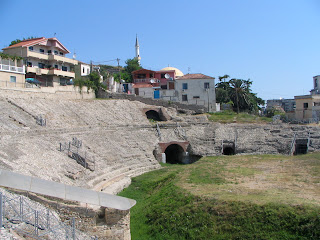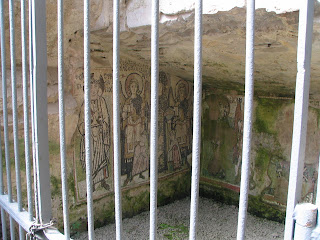Ted Williams of the Boston Red Sox had a .406 batting average in 1941. He is the last major league player to hit over .400. In the past 100 years only seven major league players have hit over .400. (Although two of them did it three times each, Rogers Hornsby and Ty Cobb)
I was thinking of this after hearing of one of the USAID Rule of Law projects here in Albania. There are no court reporters in the courts. Cindy told me that in a trial she attended that every ten or fifteen minutes the judge would stop the proceedings and write a summary. I'm not sure why this is in lieu of just using the judge's notes -- of course if one used Judge Barbour's or Judge Keady's notes, you'd be in good shape. Judge Cox's notes were nonexistant to sparse, to put a shine on it, so you'd be pretty much out of luck.
To remedy the lack-of-a-record problem, USAID, through one of its contractors, is working on a pilot program in ten courts to train speed typists to type what everyone says. I'm unclear on whether they plan for the typists to type a summary as they go, or if they intend it to be a verbatim record, but I had the idea it was the latter.
The fastest typist I've ever been around is Carol Gray. I don't know what number of words per minute she could type, but with the aid of her little add-on typing program she could type pretty much as fast as I could talk, which is probably around 160 to 170 WPM, unless I get animated, and then it might go up to 171. For minimum national certification in the United States, 225 WPM is the standard. Albanians seem to talk pretty quickly, maybe because I don't understand too much yet, but it definitely is on a par with English, so let's say 225 should be the minimum requisite competency speed for verbatim reporting here as well.
So what are the odds that your taxpayer dollars are going to be able to teach some Albanians to type that fast? About as good as the Atlanta Braves coming over here and teaching some top-of-the line Albanian athletes to hit .400, I imagine.
And what seems obvious to me, the Albanian lawyers I've met being every bit as intelligent as American lawyers, what do you suppose the argument will be when contesting the accuracy of the "record summary"? That damn court reporter left it out!




 Ellie and Emma in front of our apartment, on our way to breakfast and then Vatican City. Next picture is on the bridge going over to Castel Sant'Angelo. The big circular portion was built by Hadrian as a family tomb. The two Baroque statues on the bridge are by Bernini. Rome is continually interesting because of the juxtaposition of eras in such proximity -- Hadrian's tomb from 135 AD to the Baroque era of the statues. The walls around the tomb, which make it look like a castle, were completed by 1500. The top part of the tomb was added in the 1400s as a chapel. During the sack of Rome in 1527 the pope stayed here.
Ellie and Emma in front of our apartment, on our way to breakfast and then Vatican City. Next picture is on the bridge going over to Castel Sant'Angelo. The big circular portion was built by Hadrian as a family tomb. The two Baroque statues on the bridge are by Bernini. Rome is continually interesting because of the juxtaposition of eras in such proximity -- Hadrian's tomb from 135 AD to the Baroque era of the statues. The walls around the tomb, which make it look like a castle, were completed by 1500. The top part of the tomb was added in the 1400s as a chapel. During the sack of Rome in 1527 the pope stayed here.


























